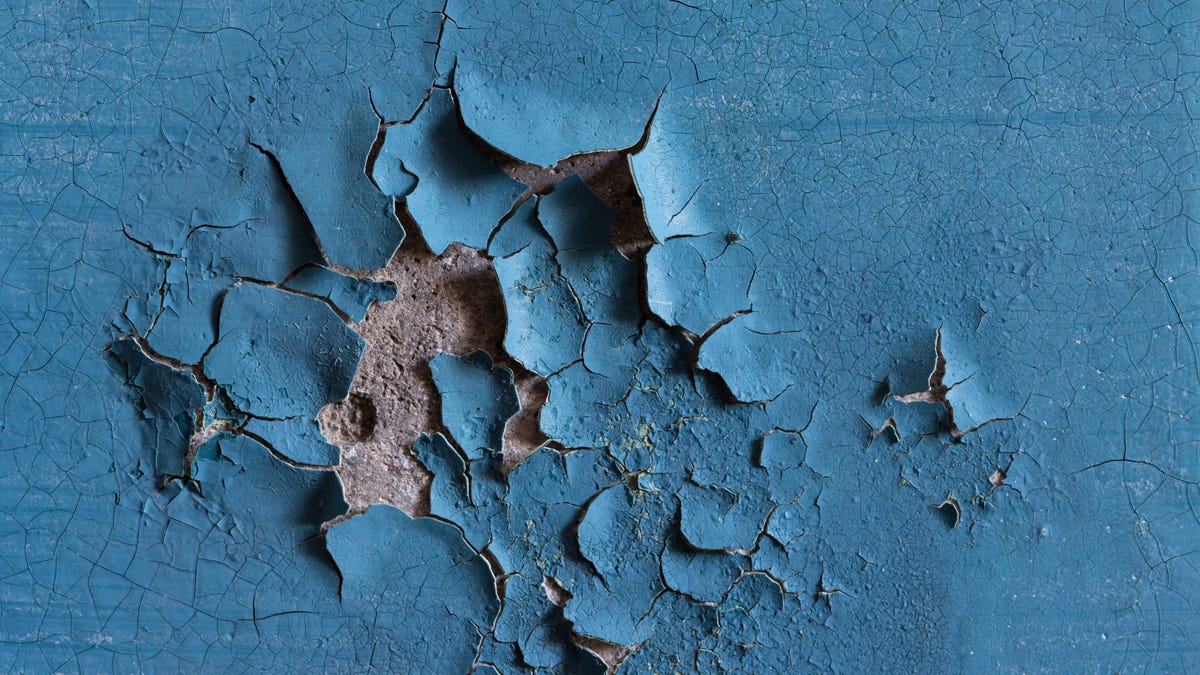How to Make Sure Your Paint Isn’t Peeling, Blistering or Discoloring

It is often said that painting is the home project that gives you the most bang for your buck . A fresh coat of paint can make a room brighter, bigger (or more intimate), or give your exterior a whole new character, and you don’t need a lot of skills or special equipment to do it.
But just because painting is a project that just about anyone can do doesn’t mean you should just pop open a gallon and start splattering on the walls. Rushing paint jobs is a great way to wake up after a few weeks and find that the paint is peeling, bubbling, or mysteriously stained, meaning you have to do it all over again, making a simple and affordable project seem less easy and affordable. To prevent this from happening, here’s what you need to do.
Prepare the walls
The number one way to ensure that your paint job fails quite impressively is to skip the prep work. It is very important to take the time to properly prepare the base you will be painting. Here’s what you need to do:
- Patch. If your walls have cracks, holes, or other damage, remove the joint sealer and patch them up. If a seam or peeling drywall is visible on the wall now, it will still be there after you paint, and even if the new paint seems to hide it, it will reappear.
- Clean. Wash the walls before painting. Dust, grease, dirt, and anything else stuck to your walls can prevent the paint from bonding to the surface, eventually leading to blistering and peeling. This doubles for your exterior walls, which are probably dirty.
- Consider the climate. The paint works best when the humidity isn’t too high and the temperature is within a certain range—usually 50 to 85 degrees Fahrenheit —but you should read the instructions printed on the paint can. If it is very cold or very hot and humid, the chances of your painting failing are higher.
- Make sure the surface is dry. If you plan to paint newly installed wood (new stairs or custom furniture), make sure the wood is well dried. New wood straight from the lumber yard (or pressure treated wood) is often damp (even if it doesn’t feel like it when you touch it) and your paint will never adhere to it properly. If the wood seems fairly dry, check the knots – they are often “wetter” than the rest of the wood and chances are they will show through the paint after a short time. While waiting for the wood to dry is tiring, it’s important that the paint lasts for a long time.
- Basic. After you have cleaned and prepared the area, apply an appropriate primer to the area. If your walls have stains, you will need a stain-blocking primer; if you are painting raw drywall, you will need a primer-sealant. You can also use a mildew-resistant or moisture-proof primer if you are painting repaired damage with water or working in damp areas such as a bathroom . The key here is to use a primer in the first place – in addition to blocking stains and sealing stains, a primer gives your paint a uniform base, eliminating differences in sheen and texture that really show up when you have color on a wall. This is especially important if you are painting a darker color with a lighter one. (Note that although many modern paints are marketed as “paint and primer in one,” you will always get the best result by applying a separate coat of primer.)
Choose the right products
In any job, using the right products and tools is always better than cheapening . High quality paint can be expensive, but it looks better, lasts longer, and requires fewer coats. If you choose the cheapest paint you can find, your chances of blistering, peeling, and discoloration will always be higher. This goes for your other tools as well – from masking tape to brushes, don’t buy the cheapest stuff you can find. You don’t have to buy the most expensive or professional tools; simply by avoiding the bottom of the trunk, you will get excellent coloration.
You also need to invest in the right roller for your walls. This will be determined by the sheen of the paint you are using (e.g. woven rollers are best for high gloss paints) and the surface you are painting – rougher surfaces need a deeper “pile” or pile height, while finer piles require more frequent refilling. paint roller, which can result in a smoother finish, but is more likely to leave roller marks on the walls. Ask someone at a paint or hardware store for advice to reduce the chance of problems after the paint dries.
Combine multiple gallons of paint
Finally, an easy way to make sure your paint isn’t discolored or mismatched is to mix all the paint cans together before you start painting. If you’re only using one gallon of paint on a small room or one accent wall, you can skip this part; just make sure your paint is well mixed, especially if it has been sitting even a few days after purchase. But if you have several jars of the same color for a large room, pour them all into a bucket and mix. There are often slight differences in pigment in cans of paint, even if they were purchased and mixed at the same time. Mixing them will eliminate any chance of one section being tinted out of color.